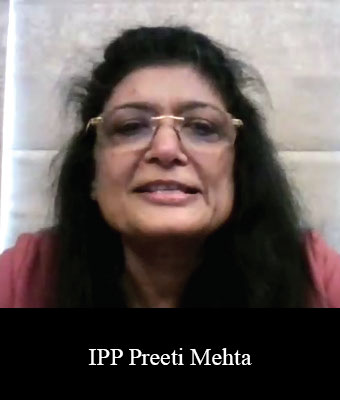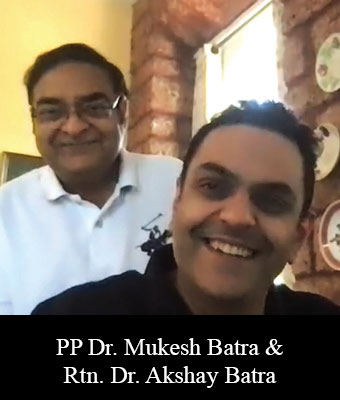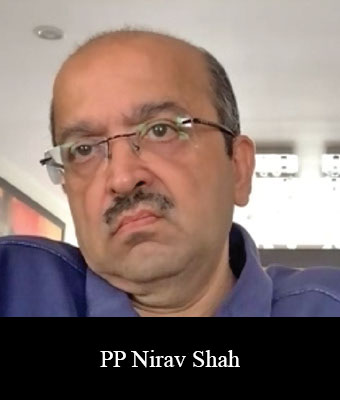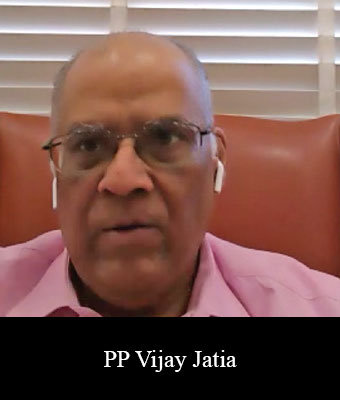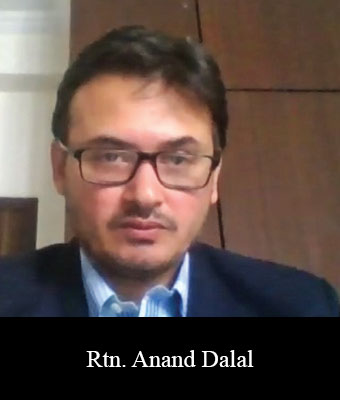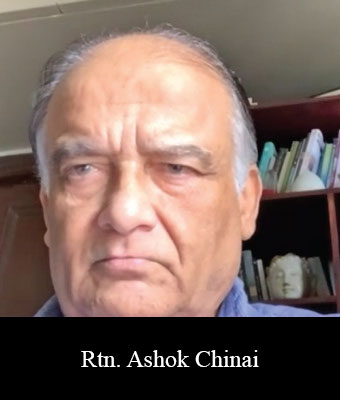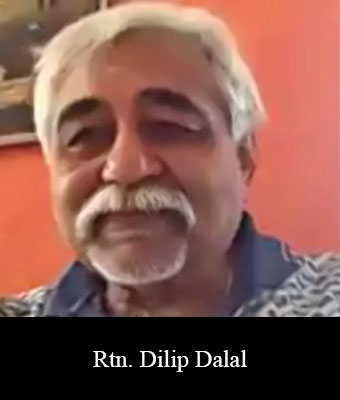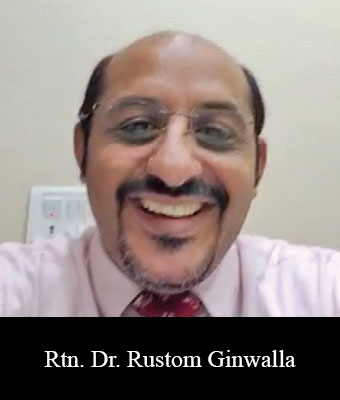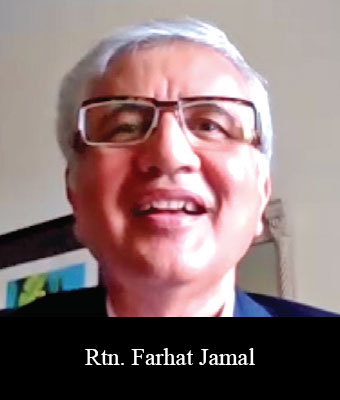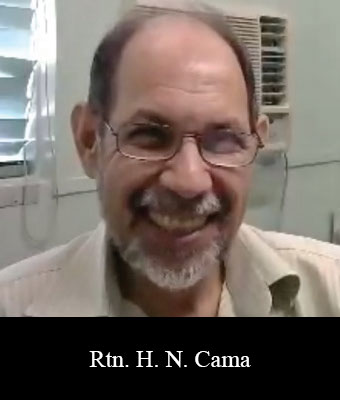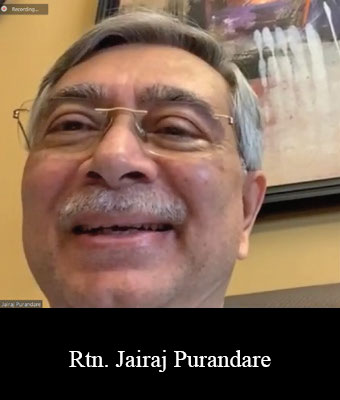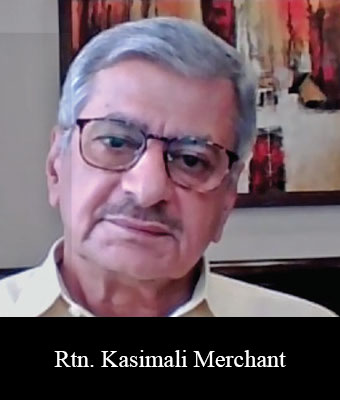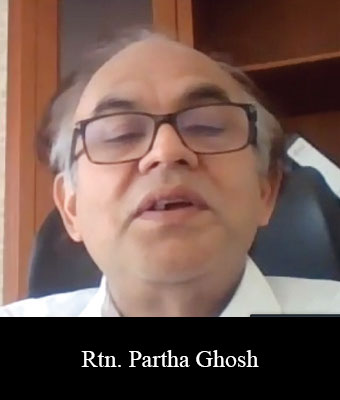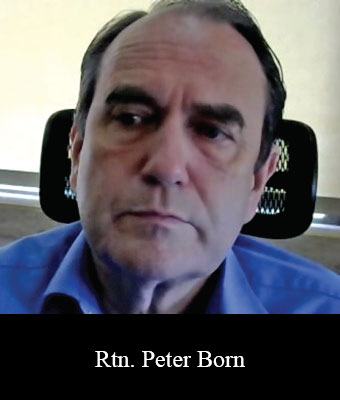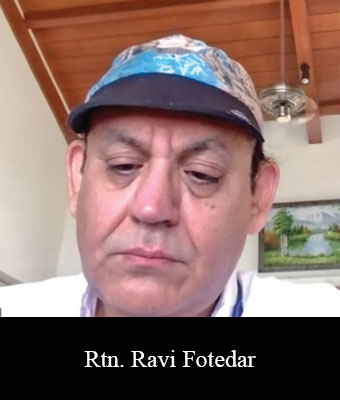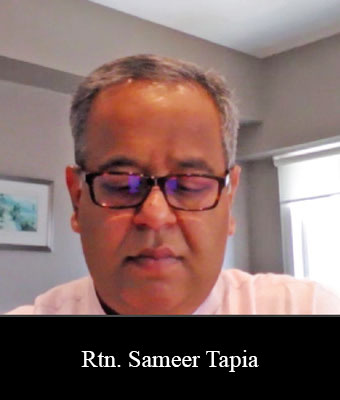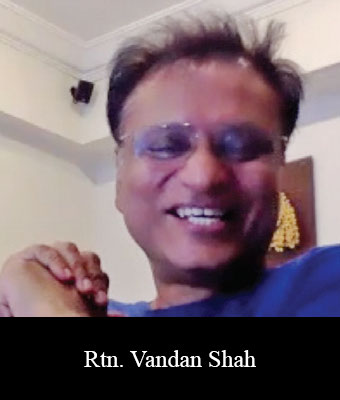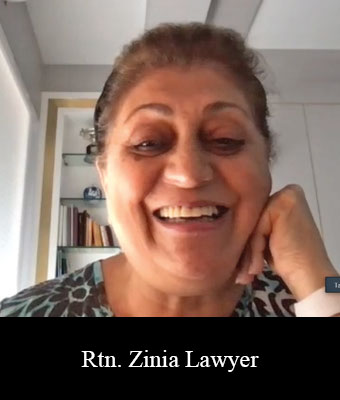
Divia Thani, Global Editorial Director, Conde Nast Traveller, & Recepient Of The Uma Jain Young Women Achievers Award, On The Future Of Luxury Travel, In Conversation With RTN. Farhat Jamal
HOW HAS THE PANDEMIC HAS AFFECTED THE LUXURY TRAVEL INDUSTRY?
I don’t think any of us has spent so much time thinking of travel as we have done in the last year. We have had the chance to think about what it means to us, experienced lack of travel, felt what it is like when you are cooped up at home and realised how integral travel is to rejuvenate and refresh ourselves. This is in addition to travelling to meet our extended families, friends and business partners.
When the pandemic ends, very few of us are thinking about the next piece of jewellery or handbag they are going to buy. I think we are all thinking of where we would like to be and with whom.
That is indicative of a positive growth for the travel industry. While the last year has been terrible, I am optimistic about where we are heading.
WHAT IS THE GLOBAL PERCEPTION OF INDIA AS A LUXURY TRAVEL MARKET AND HOW CAN A MAGAZINE LIKE CNT REPRESENT INDIA AS SUCH?
The Indian luxury travel space has evolved in the last 10 years. We now have travel products that compare with the best of the world in terms of hotels, food, fashion, restaurants, luxury and shopping. But, when you look at inbound travel, there are a few ground realities. We don’t get luxury travellers from our surrounding neighbouring countries. For most countries in the world with strong inbound tourism coming, a majority of it is from their neighbours. Unfortunately, we don’t have that kind of relationship with our neighbours to allow luxury travel.
This means India has become a long-haul travel destination. All our luxury travellers are coming from Europe and UK, Germany, France, and US. For all of these travellers India is a long journey. For most, it is a once-in-a-lifetime journey, and, for that, they have the whole world: Egypt, Sri Lanka, China… In India, there is a problem of logistics, connectivity, and safety.
While we are focussed on changing the image of the country, it is more important to focus on what we can fix to make it a more appealing destination. And, focus on marketing. When you have friends who have been to a country and have come back raving, it makes you want to take that trip.
What is happening in the country right now is a stark reality that is not helping any traveller to plan a visit to India. So, fix what needs to be fixed. The last few years, before all of this began, travel was on the rise. We are lucky to have a massive, beautiful country, it doesn’t matter what we want to do – go on a safari or skiing or go to beach, you can have anything and everything in India. I hope the domestic market is able to take advantage of all that the country has to offer.
WHAT ROLE DO FOOD, DRINK, AND AVAILABILITY OF LOCAL CUISINE INFLUENCE TRAVELLERS?
Indian travellers, more so than any other in the world, admire food. It continues to be something that we are passionate about. We have experiences being crafted around food now that is amazing. The pandemic put the focus on farm-safe products. Visitors are able to see where their food comes from, how fresh it can be, see how their food grows, understand the process and how it ends up on their plate, and interact with the chefs.
There is also a tremendous interest in regional cooking and that is exciting. There are a number of regional cuisines that many people don’t know about and that has become popular. That is going to remain important after the pandemic. Lots of people have no interest in cooking at home and are taking an interest in figuring out where their food comes from and how to stay healthy while keeping it tasty,
AS A GLOBAL EDITORIAL DIRECTOR FOR CNT, WHAT CONVERSATIONS DO YOU HOPE TO START AROUND TRAVEL LIFESTYLE JOURNALISM?
When people think about travel journalism and writing, they think about places with gorgeous infinity pools and fancy spas. The truth is travel boils down to people. It is a service industry. Often, when we come back from some of our best trips, we talk about is how beautiful the place was but you remember it because of someone who went the extra mile to make your meal special. Or, when you have a guy in the forest, everything boils down to how they are, how beautifully they explain things and what you are seeing around you.
Travel to me is as much about people as it is about places and that is something I want to highlight. It gives us an opportunity to see the point of view of a different person, to be able to understand how different cultures function and why – it bridges the gap.
Nothing in the world is more important than travel. It is seeing the world from a different perspective. I always say travellers are the ones who will save the world because they are the ones who are seeing the world, they are the ones who know what is at stake. You have been on a cruise on the Amazon, and you will understand and be more invested in what happens to these places whether it is political point of view or an economic one. You will be more invested in saving them or ensuring that the policy goes in the right direction and the people are protected.
These are the sorts of conversations that I hope we can stir with the CNT.
WHAT ARE YOUR PREDICTIONS ON WHEN WE CAN START SAFE TRAVELS?
I’d say, let’s stop for now and have a little more data and as soon as it becomes safe, then, of course, none of us can wait to hop on to a plane. But, to be honest, at this point, your guess is as good as mine. I would air on the side of caution. Since the start of the pandemic I have not been telling people to travel unless I was doing it myself. And, at this point, I would not do it, so, I would not recommend it either.
IS THERE A CONVERSATION HAPPENING ON THE COVID PASSPORT OR VARIOUS DOCUMENTS BEING CREATED FOR EASE OF TRAVEL?
The Aarogya Setu and CoWin apps allow you to have your vaccination certificate online, that is the most important thing. At the moment there is no global agreement on a vaccine passport and that is partly the problem that the travel industry is facing. Every country is talking about its own version of a vaccine passport and that at the moment all that can be used domestically, it is also used in UK and Europe, where you show your certificate, and you are allowed to eat out or watch a concert. It depends on where that country is in dealing with the virus. At the moment, India is quite far from that, we have vaccinated less than 2% of the population so I can’t imagine we are close to this.
However, India is an extremely important outbound travel market, so, a lot of countries will be looking at bringing Indians back in and they will therefore force the government to have a recognised vaccine passport. Linking it to the Aadhar card and Aarogya Setu was very smart but as a government we will just have to see how it is accepted internationally and it is too soon to say at this point.
ROTARIANS ASK
DO YOU FOCUS MORE ON INTERNATIONAL TRAVELLERS INTO INDIA OR INDIAN TRAVELLERS WITHIN INDIA? AND WHICH IS CHEAPER LUXURY TRAVEL IN INDIA COMPARED TO OVERSEAS TRAVEL BECAUSE I HAVE TRAVELLED EXTENSIVELY IN INDIA AND WHILE THE PROPERTIES ARE EXCELLENT AND INFRASTRUCTURE HAS IMPROVED A LOT, STILL THERE ARE LOT OF RESTRICTIONS IN TERMS OF TIMING TO VISIT MONUMENTS, SANCTUARIES, AND SOMETIMES PEOPLE SPOIL THEM FROM OUTSIDE WHERE AS IT IS NOT SO OVERSEAS.
COMMENTS.
You are absolutely right. For example, people who come to Agra to see the Taj Mahal – they drive from Delhi, go to see the Taj and then there is nothing else to do and so they come right back to Delhi.
There is no attraction or experience to create around that and it is not good for the travel industry. I think the silver lining is that there is a great opportunity. Somebody went and built an exquisite restaurant in Agra and got people to stay there for a night and have a meal that is a very superb experience.
I think there is so much opportunity in the country and so I always tell young entrepreneurs that space for travel is so wide open, we can do anything. But yes, we need to build an ecosystem, we need to make sure that there is ease to do business and that is something that the government is trying. A lot of public-private partnerships are coming up, the monuments are preserved, the roads are kept clean, all of that. So, we have long way to go.
In terms of the first question, CNT focusses on the Indian audience and we talk to them for travelling domestically as well as outside the country. CNT in general has editions all around the world. All the issues focus on their particular region and country and hence each is different from one another. Travel is specific to where people are coming from, what their particular interests are, what time of year they want to travel, as couple or large family, and so on, we create all of the content specific to the country.
HOW DO YOU PROTECT SITES AND MONUMENTS FROM OVER-TOURISM? WHAT ARE THE PRIORITIES FOR GETTING THIS IN ORDER?
It is a huge challenge. it is not just our hill stations that face this issue but elsewhere in the world, like Venice, Paris and a lot of other destinations. The issue is glorifying just one place. Unfortunately, we have a generation of Instagrammers who want one picture, take it and leave which does not really contribute to the environment.
If you look at a country that has done it brilliantly, look at Bhutan. Bhutan is focussed on preserving everything, it makes people want to visit, they have made the barriers into challenges, they have everything in place, you have to heave a certain amount of money as tax, the number of airlines is restricted, the hotels being built are restricted. So, there is a great vision and knowing that makes it an important destination.
In my mind, India is a much larger country and has a larger population but if you ask me the number one thing, I would do, is change the way we measure our success. At the moment, we measure it with footfalls, but the truth is few actually contribute to the economy. They are actually just putting a strain on the infrastructure.
We should focus on getting fewer people but those should be people who spend more money. We should measure tourism by revenue and not footfalls. This way, we can focus on high-end tourism coming in the country. We will make sure that we are only giving these to tourists therefore we can assure safety, contribute to economy. But also, we need to be seen that a lot of it is an infrastructure issue, access there is a nightmare, just getting up one tiny road is a problem. We need to be strict of who we allow in.
WHY HAVE NONE OF THE INDIAN AIRPORTS BEEN ABLE TO ESTABLISH THEMSELVES AS GLOBAL TRANSPORT HUBS? DON’T YOU THINK IT COULD BE A GAME-CHANGER FOR THE INDIAN TRAVEL INDUSTRY?
We need to be realistic about where we are situated, geographically. At the moment, we are a transit point for people coming in if they want to visit Sri Lanka or Maldives but beyond that we haven’t been able to establish ourselves as a hub. The opportunity does exist but we have connectivity issues even within our country and you have to have a strong market to justify an airport as a hub.
The idea of making India a global hub is still far off, but I do think that airports have changed for the better over the last decade and the government has done a good job.
HOW DOES CNT ENCOURAGE RESPONSIBLE TRAVEL AND SUSTAINABILITY?
The idea of responsible and sustainable travel has been one of the pillars of CNT for the last couple of years. We educate our travellers on the kinds of things that they need to think about if they want to be responsible travellers. Sustainability is important; the travel industry right now is one step even beyond sustainable travel and is called regenerative travel.
The difference is: when you go to a place, you leave less carbon footprint, you ensure there is no negative impact. Regenerative tourism is about ensuring that you have left it better than when you went there.
It is incredibly creative, opening a world of opportunity to take that extra step. So, go and meet the locals and see what you can do, try and speak to them and understand what they are doing, see what they are cooking in their kitchen, go out and a lot of the hotels will create and facilitate these experiences for you.
The mindset is shifting. But it is challenging because it is necessary to do the homework and doublecheck about everything.

